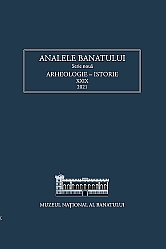Methodological considerations on the dactyloscopic analysis performed on an anthropomorphic statuette from the Cucuteni A-B phase
Methodological considerations on the dactyloscopic analysis performed on an anthropomorphic statuette from the Cucuteni A-B phase
Author(s): Adela KovácsSubject(s): Archaeology, Prehistory
Published by: Editura Mega Print SRL
Keywords: dactyloscopy; ceramic; anthropomorphous statuette; microscopy; Cucuteni Culture;
Summary/Abstract: Even if forensics and archaeology are separate sciences, they have in common a methodology for searching and discovering the traces, as a result of human activities carried out in the past. An archaeological fingerprint on a single object can reveal four aspects: it provides a sign of an individual’s identity; it indicates when the individual was alive; it indicates the geographical area in which the individual lived; it indicates the action performed by a person, such as writing a text, sealing an object, having a specific job etc. The collection, storage and comparative use of data, preferably from the entire area of the Cucuteni culture, could reveal more details about the man behind the artefact. As for fingerprints that can be corroborated with other historical sources, they can provide information about the role, occupation, or authority of individuals within society, or they can provide information about the duration of individual activities. The anthropomorphic statuette we are discussing in the present study comes from the Cucuteni A-B phase site in Ripiceni-Holm, Botoșani County, Romania and has a small imprint on the left knee. We framed that imprint typologically, observed it and discuss the limits and possibilities of analysis of the imprints within the Cucuteni culture.
Journal: Analele Banatului S.N. Arheologie-Istorie
- Issue Year: XXIX/2021
- Issue No: 1
- Page Range: 95-105
- Page Count: 11
- Language: English

